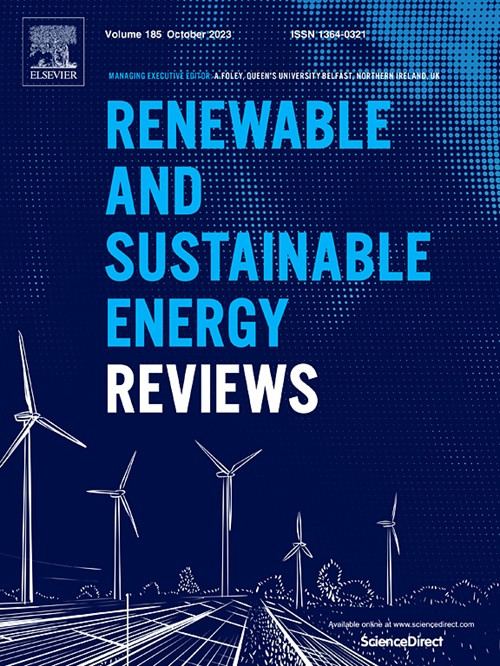Utilization of low-grade thermal energy for residential applications: A review of the existing and potential technologies
IF 16.3
1区 工程技术
Q1 ENERGY & FUELS
引用次数: 0
Abstract
To address the current energy-related crisis that leads to environmental and economic concerns as well, new policies and actions must be taken in different areas, one of which is to utilize low-temperature sources for heating instead of conventionally burning fossil fuels. The current work aims to review the present-day condition of this subject, which covers “providing low-grade heat for low-temperature demand in the residential sector”, including individual and district heating (DH) networks. Here, the existing sources, like solar thermal energy and geothermal sources, and storage methods (mostly sensible seasonal storage) are demonstrated with relevant statistics and real-world operating cases for them as well. Also, their current challenges and potential for improvement are reviewed. Furthermore, this study encompasses new trends and several possible technologies that will potentially form the body of this research and development area in the near future. Briefly, it is concluded that the shift towards low-grade heating for the residential sector has successfully taken initial steps, especially in Europe. However, it is anticipated that with the faster development in related technologies (like latent heat storage systems or using the available heat from the data centers) and the policies and regulations imposed by the governments, a more significant movement will take place all over the world.
住宅用低品位热能的利用:现有和潜在技术综述
为了解决目前引发环境和经济问题的能源危机,必须在不同领域采取新的政策和行动,其中之一是利用低温热源代替传统的燃烧化石燃料。当前的工作旨在回顾这一主题的现状,其中包括“为住宅部门的低温需求提供低品位的热量”,包括个人和区域供热网络。本文结合相关统计数据和实际运行案例,对现有的太阳能热能、地热等能源及其储存方式(主要是季节性的明智储存)进行了论证。此外,他们目前的挑战和改进的潜力进行了审查。此外,这项研究包含了新的趋势和几种可能的技术,这些技术将在不久的将来潜在地形成这一研究和发展领域的主体。简而言之,结论是住宅部门向低等级供暖的转变已经成功地采取了初步步骤,特别是在欧洲。然而,预计随着相关技术(如潜热存储系统或利用数据中心的可用热量)的快速发展以及政府实施的政策和法规,世界各地将发生更重大的变化。
本文章由计算机程序翻译,如有差异,请以英文原文为准。
求助全文
约1分钟内获得全文
求助全文
来源期刊

Renewable and Sustainable Energy Reviews
工程技术-能源与燃料
CiteScore
31.20
自引率
5.70%
发文量
1055
审稿时长
62 days
期刊介绍:
The mission of Renewable and Sustainable Energy Reviews is to disseminate the most compelling and pertinent critical insights in renewable and sustainable energy, fostering collaboration among the research community, private sector, and policy and decision makers. The journal aims to exchange challenges, solutions, innovative concepts, and technologies, contributing to sustainable development, the transition to a low-carbon future, and the attainment of emissions targets outlined by the United Nations Framework Convention on Climate Change.
Renewable and Sustainable Energy Reviews publishes a diverse range of content, including review papers, original research, case studies, and analyses of new technologies, all featuring a substantial review component such as critique, comparison, or analysis. Introducing a distinctive paper type, Expert Insights, the journal presents commissioned mini-reviews authored by field leaders, addressing topics of significant interest. Case studies undergo consideration only if they showcase the work's applicability to other regions or contribute valuable insights to the broader field of renewable and sustainable energy. Notably, a bibliographic or literature review lacking critical analysis is deemed unsuitable for publication.
 求助内容:
求助内容: 应助结果提醒方式:
应助结果提醒方式:


